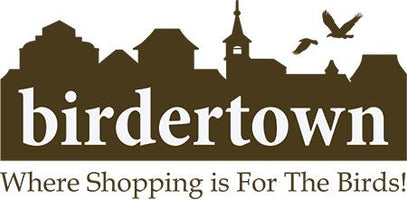
Types of Bird Suet and the Best Suet Feeders
Suet is a type of food that is loved by many different species of birds. In fact, you’ll often find that suet is favored by our feathered friends such as Nuthatches, Blue Jays, Cardinals, Woodpeckers, and many more. However, there are lots to know when it comes to suet including the different types of bird suet and what are the best suet feeders. Let’s take a look at this topic.
Types of Bird Suet
When it comes to bird suet, there are two factors to consider when distinguishing the different types. One is flavor and the other is shape. Let’s begin by taking a look at the different flavors of bird suet.
- Seed. Suet mixed with seed are perhaps the most popular type available. Typical types of seeds that you will see in these are cracked corn, safflower seed, and black oil sunflower as these are favorites of many types of birds.
- Fruit. Suet cakes that have fruit flavors are another popular option. These are enjoyed by many types of birds. Typical flavors include cheery, orange, and apple. These typically have pieces of dried fruit mixed in. Bluebirds, orioles, and robins tend to love this.
- Nuts. Birds that go crazy for nuts like finches and nuthatches will love these suet cakes. Here, you’ll have things like peanuts, walnuts, and almonds mixed in. Some will have whole nuts while others will have pieces.
- Insect. There are some types of suet that have insects like mealworms mixed in. For birds that eat insects like chickadees and mockingbirds, these will be delectable items.
- Pepper Suet. While pepper suet probably sounds weird, it is good for keeping away pests like squirrels and raccoons. Birds actually have a much lower sense of taste and don’t mind the spicy pepper flakes.
Another consideration when it comes to different types of bird suet is the shape. Here are the basic common shapes.
Best Suet Feeders
When it comes to picking out the best suet feeder for your backyard, there are several things that you will want to consider. Many decisions come down to the space you have available to hang suet feeders or even the type of bird you want to attract. Let’s take a look at the following types of suet feeders and what they are great for attracting.
- Cage Suet Feeders. The most common by far, cage feeders allow you to place a suet cake into them. They are typically hung or mounted from a tree. This is also one of the most versatile suet feeders as you’ll tend to attract virtually any bird that likes suet meaning your choice of suet flavor is the most important factor.
- Upside Down Suet Feeders. This is a great option if you don’t want to have starlings around as these birds are typically unable to hang upside down to eat from them. Thus, many birders consider these to be a “pest free” suet feeder.
- Suet Plug Feeders. These feeders typically look like logs on the outside. They have holes for suet plugs and are great for attracting woodpeckers.
- Suet Ball Feeders. Again, this is another alternative to the standard suet cakes. These allow you to stack a number of different balls. A big benefit is that you can use different flavors of suet, attracting a wider range of birds with one feeder.
- Suet Bags. These are essentially little mesh bags of suet that can be hung in your yard. They are inexpensive, making it easy to buy a lot. One concern is that there are occasions (although rare) where birds’ feet can get stuck in them.
Hopefully, you now have a good understanding of the different types of bird suet and the best suet feeders for your needs. As always, Birdertown is happy to be your authority for backyard birdwatching.
